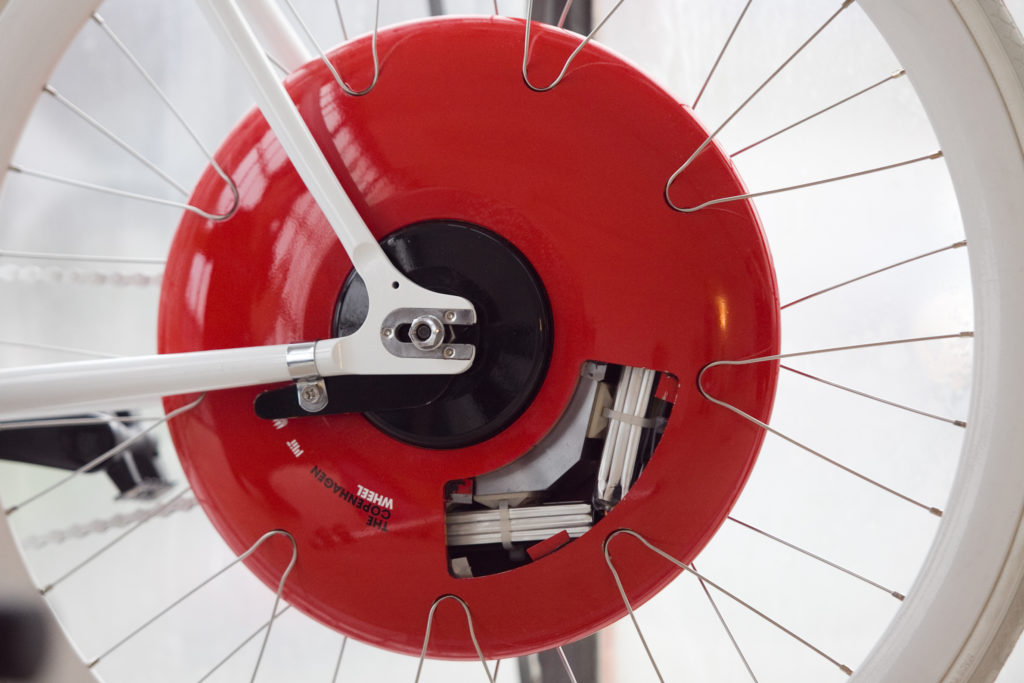Adapting organisations and cities to non-linear changes
Adapting organisations and cities to non-linear changes
Paris, 3 November 2021: discussions at this year’s edition of the MIT Paris Symposium explored the impacts of technology and non-linear changes on organisations, urban environments, and innovation ecosystems.
Standing out from the crowd
Even before the social and economic disruptions of the coronavirus pandemic, non-linear changes were already ongoing – huge advances in data sciences for retrospective (machine learning) and predictive (artificial intelligence) modelling, and a revolution in biotech, to name but a few. Given this context, the pressure is on for organisations to be adaptive, agile and innovative. But just how can they discover paths forward and succeed in such unfamiliar times?
“‘Social overlay’,” insists Steven Spear, a senior lecturer at the Sloan School of Management and Engineering Systems Division at MIT, is the differentiator when it comes to innovation performance by organisations. “How we architect the social overlay, the social circuitry that determines who’s in conversation, who’s in collaboration, who’s acting creatively with whom, when, about what, in what way, has a huge impact on the successes organisations might enjoy.”
Another must for organisations, reckons Dr Spear, is understanding the ‘problem space’. Ways of tackling homelessness, for example, illustrate his point: all so often obvious solutions are found, like building homes, yet the issue isn’t just about a lack of homes but down to a host of reasons. This example of “social policies failing to address the core problems” also applies to the tactics some organisations adopt in response to changing competitive environments and technological opportunities.
Then there is the importance of creating a ‘protected space’ offering a confluence of new technology and business models and space to think creatively, to figure things out. Why did sales of Toyota’s Prius outstrip those of its Chevy Volt rival in the 1990s? “Because Toyota stepped out of the normal channels of development and allowed its engineers to enter a protected space to ‘invent the car for the 21st century’,” explains Dr Spear. “In this space they could depart from the existing business models to create partnerships, experiment with the technology and business models, design, and so forth.”
Many companies today have operations that are distributed worldwide. In the case of really new situations – because the tech and/or competitive environment is changing – they may adopt different coping strategies:
- the portfolio or decentralised approach, “a risk diversification strategy,” according to Dr Spear, whereby each factory or office or site does its own thing; some might prove successful, others not;
- the top-down or centralised pathway, with headquarters telling the rest of the company what to do;
- the centre-out strategy that decides to take full advantage of the distributed intelligence of the whole organisation.
Dr Spear clearly favours the latter. To illustrate, he blames top-down politics for the slow rate of Covid testing in the US compared to Europe. Yet, on the other hand, when it came to developing Covid vaccines, the US Food and Drugs Administration (FDA) encouraged every qualified organisation to get involved – “a centre-out approach with tens of thousands of minds attached to the problem, so it obviously developed very fast, even to the point vaccines were catching up with testing!”
How are organisations responding to disruptive times?
“This centre-out approach resonates a lot with what we do, as does having a protected space to push ideas,” agrees Fabrice Denis, managing director, Build Differently Division, Bouygues. “Given the urgency of issues like carbon emissions, harm to biodiversity, and waste, we [the building industry] have to make a revolution!” The Bouygues Group aims to build this ‘revolution’ on three pillars: reducing impacts (low carbon footprint, circular economy); industrialisation (creating disruption to gain in competitiveness and so offset extra costs); and a usage-driven, architecture-driven approach. An example of these three pillars ‘in action’ is Bouygues’ current focus on timber construction. “We are looking to build all our projects with 1/3 timber by 2030; right now we are at 3%,” says Mr Denis.
At Dawex, a French start-up that facilitates and accelerates secure data circulation between economic stakeholders, institutions and private organisations, the innovation process is very much a case of first trying to kill the idea. “Each time the idea survives means maybe it’s worth working further on,” says co-CEO Fabrice Tocco. MIT shares this view: “Kill the idea, not us!” says Luis Perez-Breva, faculty director of Innovation Teams Enterprise, explaining how MIT debunks the popular ‘fail fast’ mantra by running all its innovation factories and companies based on a de-risked problem-solving organisation that does not fail in predictable ways. In other words, by exploring and planning problems, then moving onto the ‘build-to-kill’ step before scaling up, or not.
Another priority for MIT is innovating efficiently. Here Carlo Ratti, director of the Senseable City Lab, illustrates how innovation waste was indeed arrested in a real-life project – the Copenhagen Wheel: designed by researchers at the Lab, it transforms ordinary bicycles into hybrid e-bikes that also function as mobile sensing units (for pollution, traffic, driving conditions).
However, since launch in 2009, this innovative device as a product proved too expensive for people to buy (they could change their bikes for less). “We were selling a few Wheels, but not enough.” So, while production may have ceased due to market forces, the innovation and intellectual property developed by the Lab has not been wasted. “Three or four years ago the micromobility market opened up and through this we are now channelling these [Copenhagen Wheel] developments, i.e. in artificial intelligence to capture data, diagnostics, remote maintenance, etc., through our MIT company Superpedestrian and the electric scooter company Link,” explains Mr Ratti.
Future forward >>>
“Inventing ways out of problems rather than products seems to be the way ahead for today’s students from all over the world,” observes Luis Perez-Breva, based on his first-hand teaching experience over the past decade. Furthermore, given the enormous amount of technology available today, he points out how it is now possible to repurpose and reshape it and so focus on tackling problems systematically.
With regards the future of cities post-Covid, Carlo Ratti believes “cities are coming back… but differently.” Instead of returning to where they were before Covid, he anticipates transformations to office buildings, for instance, as people combine working on- and off-site, plus, “most people in the US are downsizing their office space.” Hence in 2022, “very interesting changes in real estate design and usage,” are highly likely, but, at the same time, “if you remove physical space, then our social networks suffer a lot.” Given these pointers, going forward he encourages rethinking design not to predict the future, but to build it together.
“Cities, like companies, are innovating at different paces – some are champions and leading the way, others are lagging behind,” sums up Fabrice Tocco.





